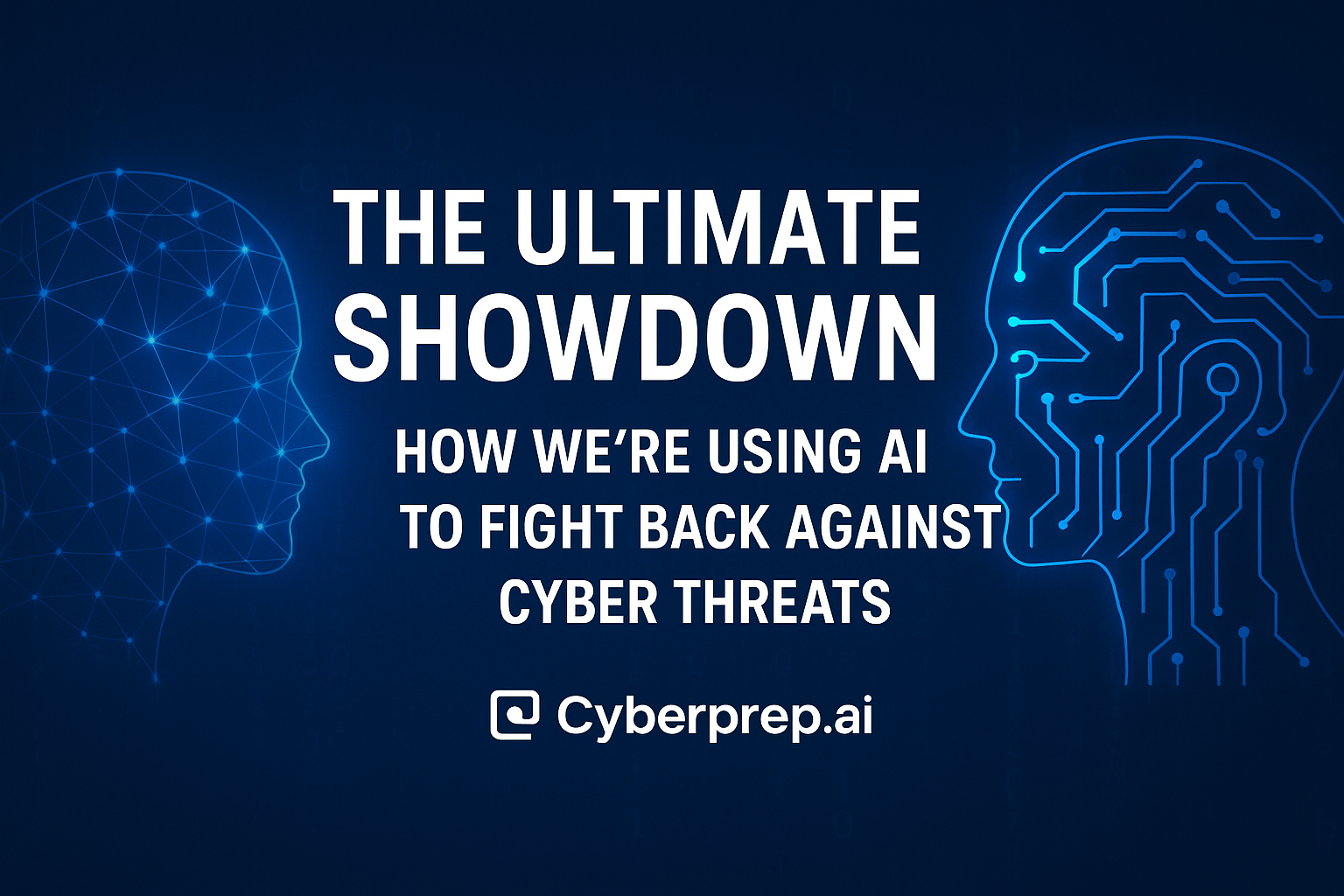Welcome back to the Cyberprep.ai blog, and to a new month dedicated to “The AI Arms Race.”
Last month, we explored how AI is being weaponized by attackers — from deepfakes to Phishing 2.0. Today, we turn the tables. In this escalating digital conflict, the most powerful defense we have is often the very technology being used against us: Artificial Intelligence.
As cyber threats become more sophisticated and automated, relying solely on human analysis is no longer sustainable. The sheer volume and complexity of attacks demand a faster, smarter response. At Cyberprep.ai, we champion the strategic deployment of AI as a critical component of any robust Preparedness Framework.
Fighting Fire with Fire: AI’s Role in Modern Cyber Defense
The battle against cybercrime is increasingly becoming an AI vs. AI showdown. Here’s how advanced AI is revolutionizing the global fight to defend digital assets:
- Autonomous Threat Detection and Prediction
- The Problem: Traditional security tools often rely on known signatures, allowing unknown threats to bypass defenses.
- AI’s Solution: AI-powered systems analyze vast amounts of network traffic, user behavior, and system logs. By learning what “normal” looks like, they autonomously detect anomalies and predict attacks before they unfold — enabling proactive intervention at machine speed.
- Automated Incident Response
- The Problem: Once a breach occurs, every second matters. Manual response is too slow, giving attackers time to spread.
- AI’s Solution: AI-driven SOAR (Security Orchestration, Automation, and Response) platforms can isolate infected machines, block malicious IPs, patch vulnerabilities, and even collect forensic data. This reduces damage and recovery time dramatically.
- Enhanced Vulnerability Management
- The Problem: Tracking thousands of software vulnerabilities across complex IT environments is overwhelming.
- AI’s Solution: AI continuously scans for vulnerabilities, prioritizes them using real-world threat intelligence, and can even recommend or apply patches automatically. This ensures an ever-evolving, stronger defense perimeter.
- Next-Generation Phishing & Malware Detection
- The Problem: Generative AI enables hyper-realistic phishing and polymorphic malware that traditional filters miss.
- AI’s Solution: Advanced AI models analyze linguistic cues, emotional tone, and behavioral anomalies in emails — spotting what even seasoned professionals might miss. Likewise, AI detects subtle malware code changes, catching never-before-seen threats.
The Human-AI Partnership: The Key to Preparedness
AI is not replacing human security experts; it’s empowering them. AI handles scale, speed, and automation — freeing human teams to focus on strategy, investigations, and governance.
This human-AI partnership is the cornerstone of effective cyber preparedness in 2025. It’s about leveraging both strengths: AI for speed and scale, humans for intuition, ethics, and oversight.
This is the heart of the Cyberprep.ai mission. Our training programs equip teams worldwide with the knowledge and skills to implement and manage AI-powered security solutions. We bridge the gap between human expertise and cutting-edge technology, ensuring organizations stay ahead in the AI arms race.
Final Thoughts
AI isn’t just part of the problem — it’s a critical part of the solution. The organizations that thrive in 2025 will be those that prepare now by mastering the human-AI partnership in cybersecurity.
How is your organization preparing for the AI arms race? Share your thoughts with us.
🔗 Explore more at Cyberprep.ai and check out our recent blog: Are VPNs Still Enough to Protect Me?.

